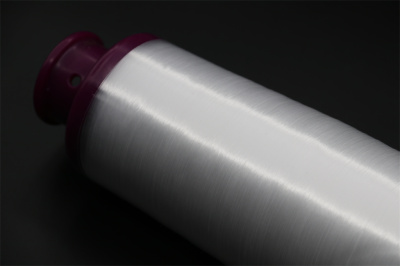
Carbon Fiber Veil for CFRP: Advancing Applications and Tech Development
2024-03-29 14:44
The fabric of high-tech industries is intertwined with high-performance inorganic fibers, among which carbon fiber stands out. Since its debut in the commercial market with carbon fiber-reinforced resin fishing rods in 1972, its usage has soared, especially in aerospace materials signifying the dawn of an advanced era. The predominant application of carbon fiber is as a reinforcement in resin materials, forming carbon fiber reinforced plastic (CFRP). The carbon fiber veil for CFRP provides exceptional integral performance, marking its footprint and potential across multiple sectors. From aerospace components like missiles and space exploration platforms to launch vehicles and beyond, carbon fiber veil for CFRP is the backbone of innovation in these fields.
The aerospace industry has become synonymous with carbon fiber, relying on carbon fiber veil for CFRP's unparalleled qualities. In missiles, this includes essential parts such as missile fairings, composite supports, instrument bays, decoy bays, and launch tubes. Space platforms benefit from the minimal structural deformation and exceptional tolerance to harsh cosmic conditions that carbon fiber veil for CFRP offers, utilized in constructing load-bearing cylinders, honeycomb panels, and satellite bases. Launch vehicles see this material form crucial components of their makeup, like nose cones and engine linings. The maturation of carbon fiber veil for CFRP applications in spacecraft is a testament to its role as an indispensable material for achieving lightweight, miniaturized, and high-performance goals in aerospace.
The narrative continues in aviation, where carbon fiber veil for CFRP has reshaped aircraft construction. Following the 1970s energy crises, carbon fiber veil for CFRP emerged as a solution for energy-efficient plane design, now a cornerstone in major aircraft, exemplified by its significant use in renowned jetliners. This shift towards carbon fiber veil for CFRP not only resulted in weight reduction but also boosted the energy and environmental efficiencies of these crafts. The use of carbon fiber veil for CFRP in crafting the wings of prominent jetliners underscores its strength and flexibility. Moreover, it addresses the need for wide-span wing accommodation, given its foldable wingtips design. Partnerships with aviation manufacturers have furthered the development of carbon fiber veil for CFRP, with supply agreements ensuring its increased adoption and signaling a push for greater production rates to meet rising demands. The significant use of carbon fiber veil for CFRP in the construction of the primary load-bearing structures, such as the fuselage and wings of modern airplanes, marks a pivotal moment in aviation history.
Advancements in maritime engineering have also been notable, with carbon fiber veil for CFRP enhancing the structural integrity, energy efficiency, and maneuverability of advanced naval vessels. Its adoption for military and civilian nautical applications has been transformative, with examples such as solar-powered exploratory ships paving the way for innovative maritime travel. Carbon fiber veil for CFRP's role extends to ship propellers and masts, offering reduced noise and better performance – crucial for stealth operations.
The rail industry is not far behind in leveraging the advantages of carbon fiber veil for CFRP for vehicular structures. Its lightweight property significantly cuts down on energy consumption. By replacing metal with carbon fiber veil for CFRP, high-speed trains have achieved weight reductions, thereby lowering energy use and enhancing safety measures. Urban transportation has evolved with carbon fiber veil for CFRP, reshaping the composition of subway cars, reducing their overall mass and improving the balance between structural integrity and energy efficiency.
In the automotive sector, the carbon fiber veil for automobile lightweight has become pivotal. Studies have shown a direct correlation between weight reduction and fuel efficiency, with carbon fiber veil for automobile lightweight emerging as the most effective material for this purpose. The dawn of the electric vehicle era has witnessed the carbon fiber veil for automobile lightweight becoming central to the design, making these vehicles not only more energy-efficient but also sportier.
The retail giant's venture into conceptual freight trucks illustrates the expanding horizon for carbon fiber veil for automobile lightweight. Their new concept trucks, aiming to transform logistics through advanced aerodynamics and microturbine hybrid power systems, heavily feature carbon fiber veil for automobile lightweight. These trucks exemplify the industry's push toward more efficient, sustainable transport solutions, with carbon fiber veil for automobile lightweight playing a leading role in their construction.
Space satellite technology has not been left untouched by the wonders of carbon fiber. Since the mid-1980s, the use of carbon fiber veil for satellites high strength has been integral, making up the majority of satellite structures and significantly reducing their mass. The performance of carbon fiber veil for satellites high strength in outer space is remarkable, supporting critical components and ensuring satellites' structural integrity and safety against space's volatile conditions.
The increasing need for a sustainable approach in handling the by-products of CFRP manufacturing has led to the development of efficient recycling methods. Thermal decomposition, a viable industrial solution for recycling carbon fiber veil for CFRP, is gaining traction. It not only addresses waste management concerns but also preserves the mechanical properties of the recycled fibers, heralding a new era in the lifecycle of carbon fiber veil for CFRP.
The carbon fiber industry stands at the precipice of a revolution, with carbon fiber veil for CFRP, carbon fiber veil for satellites high strength, and carbon fiber veil for automobile lightweight setting the stage for an era marked by unprecedented advancements in material science and technology.








